If you are reading this post that means there is a high chance that you are already concerned about mealy bugs that are destroying your garden. In the majority of cases we try almost everything to control this pest. But after some period of time they again come to our garden and spread from one plant to another with very rapid growth. Are you curious to know how do mealy bugs spread from plant to plant? If yes, then this content is for you. Here, I will tell you how mealybugs spread so fast in plants and from where it has come from my own 15 years gardening experience. The life cycle of these insects will also give you a deeper insight into them. One of the organic ways to control them is to attract ladybugs inside the garden. There are also some other way that we will discuss here too
So, let’s get to know how mealybugs enter your garden territory!
How do mealy bugs spread from plant to plant
Mealybugs are wingless insects that produce eggs to increase their population to infest garden plants. They basically suck the juice of plants and are usually found in the flower buds and new plant growth area. There are basically 6 main reasons how they spread from plant to plant. They are as follows…
- Overwatering Moist Environment
- Stay In Soil As Eggs
- Carried By Ants
- Carry Through Air
- Touch Of human hand
- Another Plant From The Nursery
Below we discuss detail about those points
1. Overwatering Moist Environment
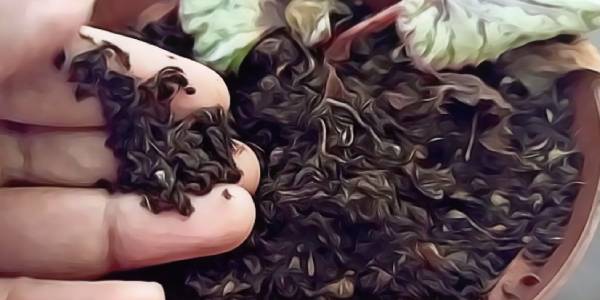
By origin mealybugs come from warm climates. That’s why they are more attracted to moisture. Ultimately, you will see them inclining towards over-watered plants. You know they are sneaky bugs that tend to lay more eggs in a humid environment and suck the life out of the host plant. Moreover, when you continue to over-water your outdoor plants, it provides an opportunity for the hidden mealybugs to increase in number. Then they began to suck the sap of leaves which results in the lifelessness and curling of leaves. Its also harm the growth of the plants. Mealybugs also spread when you over-fertilize a land and keep watering it. If you attempt to remove them, then you must separate the over-watered plant to reduce the chance of mealybugs’ growth.
2. Stay In Soil As Eggs
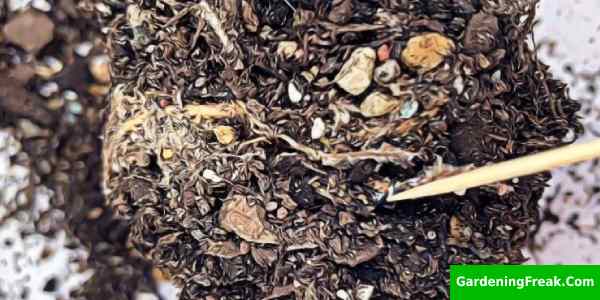
Sometimes these tropical insects stay in the soil as eggs to grow their colonies. The mealybugs who feed on the host plant roots pierce a hole in there and suck all the juices that flow out from it. That results in the entire plant’s weakening, so female mealybugs laid eggs in roots under the soil. Then the eggs hatch within a couple of weeks and spread to other plants. So it is always a wise decision to sterilize new soil before using it in your garden .
3. Mealybugs Carried By Ants
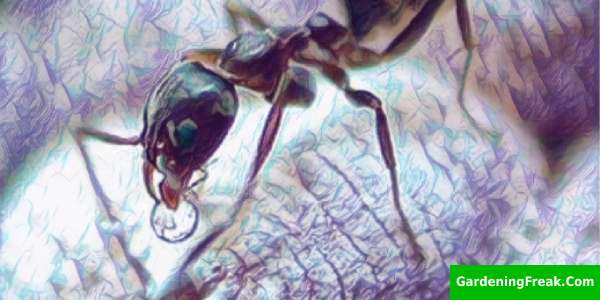
Mealybugs are slow-moving and tiny insects who can’t move much on their own. These nasty bugs depend on ants for their transport. So, ants take these white cotton insects and spread them from one plant to another. However, it’s not easy as mealybugs are hard to control because of their slippery outer layering. Ants exert their simultaneous control to carry them on host plants. These tiny insects transfer the bugs on plants to get their food. The honeydew excreted by mealybugs is the source of food for ants. To protect their food, ants spread a significant number of bugs in different plants.
4. Carry Through Air

Mealybugs can produce 50-100 eggs at a time. When the eggs are laid at the plant’s leaves or crown, they are incredibly lightweight. So, it can easily carry the eggs through the air on host plants.Moreover, the air is the primary source for any pest to infest, and as being a vector of fungal spore’s air plays a significant role in the spreading of mealybugs.
5. Touch Of human Hand

One factor of spreading mealybug is the touch of our hand. While gardening, we might not notice the tiny eggs of mealy bugs that get attached to our hand.Ultimately, when you attend to your garden’s other plants, then there will be a chance for bugs to spread in all the plants. To avoid it from happening, you should develop the practice of washing your hands before and after touching any plant.
6. Another Plant From The Nursery

Mealybugs can spread swiftly as you might not notice the infestation first. It can happen if you bring a plant from a nursery store. There could be unnoticeable eggs in the pot of a new plant that causes the plants to become infected.Moreover, the environmental conditions of the new plant could also be the cause of infestation. So, when you place the infected plants among your other outdoor plants, then there will be a high chance for mealybugs to transfer from one plant to another to suck the sap of growing leaves.
What Is Mealy Bug?
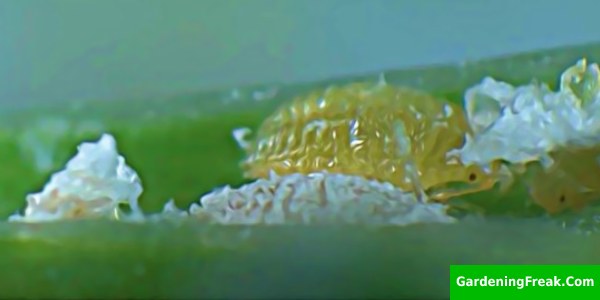
Mealybugs are white, soft-bodied insects that live by eroding the juice of leaves and stem of the host plant. You know they can be found on perennial foliage plants. During sucking of sap, they often release sticky honeydew that looks like white soft cotton fuzz. The more honeydew residue on plants, the more will be a chance for white sooty mold to grow. Mealybugs are the productive type of scale insects as they are part of the scale family. Although, they can move at all the stages of their life, unlike scale insects that cannot move in their adult stage.
Mealy Bug Life Cycle
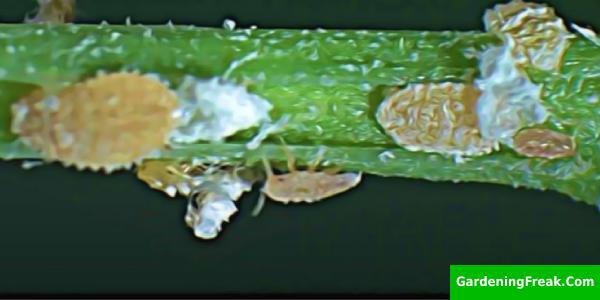
If you want to how do mealy bugs spread from plant to plant and if you want to get rid of mealybugs from your garden you have to know about their life cycle. The different stages of the mealybug’s life cycle are as follows:
Egg Stage
You know the life cycle of mealybug species is somewhat different from each other as adult females produce more than 200 eggs in cotton-like sacs for 10-12 days. They could lay eggs on crowns, bark, soil, leaf, fruit, and twigs of a plant. While long-tailed female mealybug doesn’t lay eggs anywhere, the eggs remain in the female until they hatch. Do you know they don’t live long? It’s because they are similar to aphids.
Crawler Stage
In the crawler stage, the egg is hatched, immature nymphs come out who are called crawlers. You know they are yellow, pink, and orangish in color. At first, they don’t release waxy residue and can move quite fast. Although, they began to excrete honeydew when they settle on feed.
Adult Stage
While older nymphs have prominent legs, they move rather slowly and don’t go too far when they begin their movement. In adult stages, males have two wings and are tiny in appearance. Moreover, they live only for some days.
Now, you know all the stages depend on the variety of species and temperature of the environment. At high-temperature, they could lay fewer eggs. Furthermore, mealybugs develop their one generation in three months that means they can produce two to six generations in a year.
Mealy Bug And Ants: The Symbiosis Relation
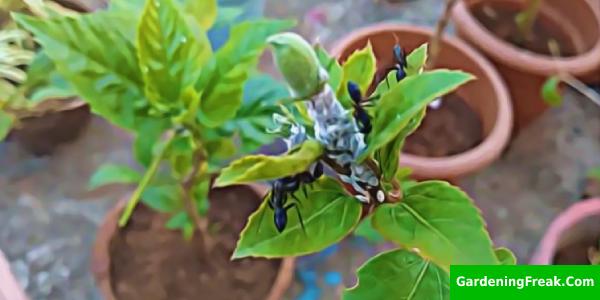
Ants and mealybugs have a symbiotic relationship between them. You can notice their relation by observing the stems of perennial foliage or citrus plant. It works by providing benefits to both species. Ants cover the colonies of mealybugs on the citrus plant to protect them from predators.When needed, they also transfer the bugs from one plant to another. All of this is done because mealybugs are the source of food for ants. The waxy residue, which is called honeydew, provides energy to ants. That’s why they gravitate around the mealybugs to get this sugary meal for themselves.So if you want to control mealy bug you need to control the ants on your gardening area.
FAQs
How quick do mealybugs spread?
The spreading of mealybugs depends on its life cycle. One generation of bugs develops in the time of three months. So, when these tropical insects pass the crawler stage, they become adults and lay more eggs in roots, stem, and leaves whorls of the host plant to spread the infestation.
How to get rid of mealybugs on your houseplant, For good?
First, you can separate the infected plant from house plants to prevent further infestation of mealybugs. Then kill these nasty insects by using isopropyl alcohol, or you can spray the infected areas with insecticidal soaps. If you want to use some organic pest control , then neem oil could be a solution.
Can plants recover from mealybugs?
You can recover the plants if you detect the infestation in time. So, it's essential to check the plants from time to time. Moreover, pest recovery depends on the type of plant. Such as Aeonium Tabuliforme can be recovered with some assistance.
Do mealybugs die in winter?
A research was conducted to see the survival of mealybugs in winter. However, the eggs hatched in winter, but they didn’t pass their first stage. Mealybugs came from a warm climate, so they can't sustain the cold temperature of winters.
Can mealybugs jump?
Mealybugs can jump when they become older. They move and hang around from the stem of one plant to the leaves of the other. Not only on plants, but you can also see them jumping from shrubs and fresh vegetables as they have a high level of nitrogen in them. That attracts the bugs to fly and suck the juices of leaves.
What eats mealybugs?
To control the garden pests, ladybug-like green lacewings liked to eat white soft-bodied insects. It can both the larvae and adult ladybird beetles who eat mealybugs. Moreover, there is also the fact that ants don't directly eat bugs, but they eat the residues excreted by bugs.
Do mealy bugs come from the soil?
Yes, mealybugs can come from the soil as they lay eggs by making a hole in the plant roots. First, they suck all the sap and weakens the plant; then, they lay eggs in the soil. Which later come out and spread their white spores on the plant surface.
Conclusion
When mealybugs become adults, they lay eggs in a humid environment and over-fertilized plants. It provides favorable conditions for these insects to grow, but the interesting fact is that ants are the ones who transfer these tropical insects to other places. The symbiosis relation of ants and mealy bugs allows them to get benefit from each other. The ants become the shield of mealy bugs just to feed on its honeydew. These two are basically the main source about how do mealy bugs spread from plant to plant. However, there are other source that I also discussed in above article. That’s all from this article. Hope this information will help you to get rid of mealy bugs for your garden.














